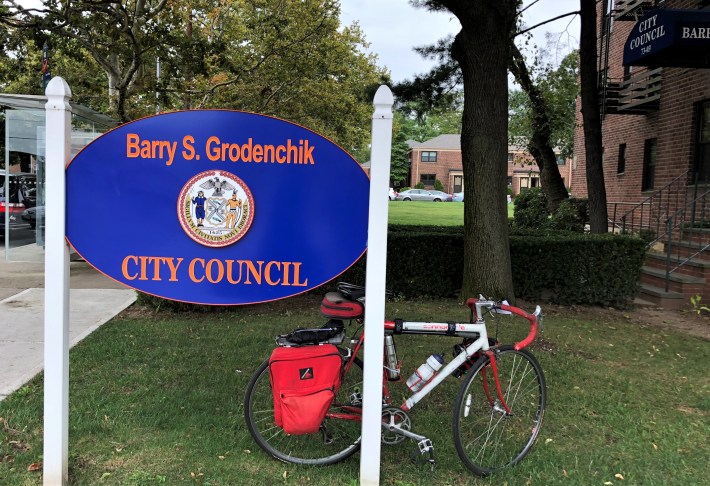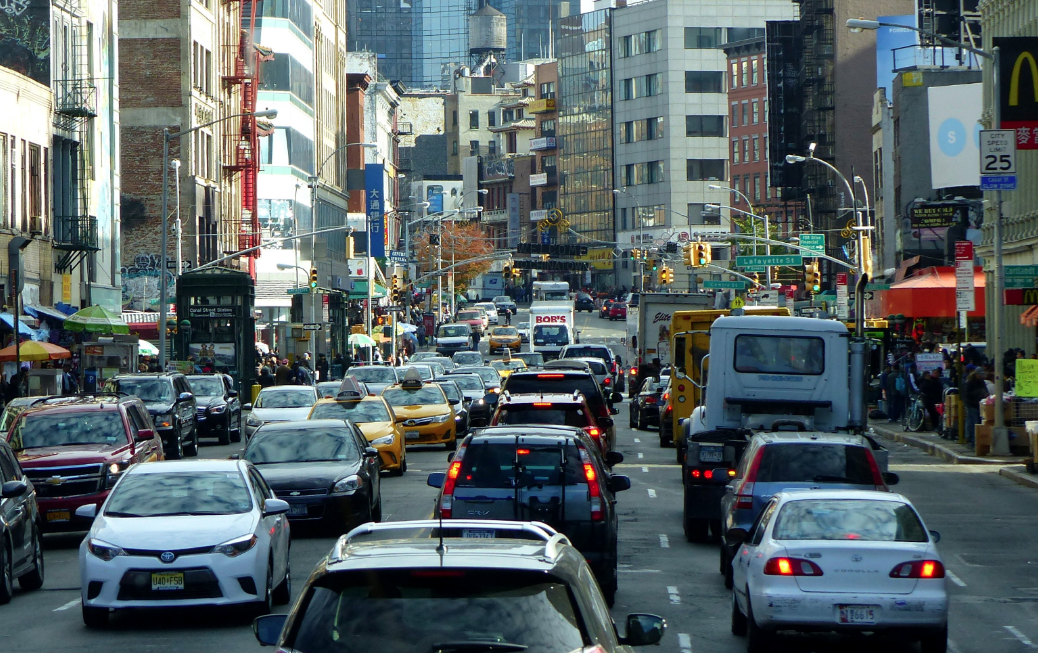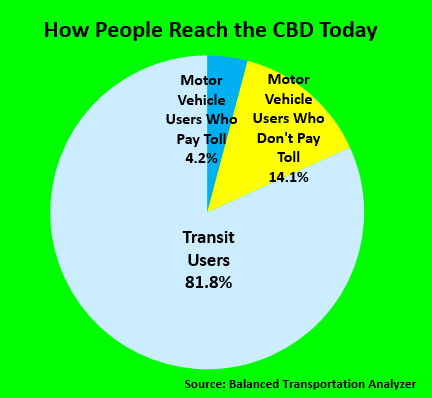Dear Barry,
I wish we could have spoken on Sunday before you tweeted support for Richard Brodsky’s Daily News op-ed in which he assailed congestion pricing as "elitist." As you recall, we met at your office in August and pored over my charts, including one showing that this time around, congestion pricing would draw the most fees from residents of Manhattan, not Brooklyn or Queens. (The reason: hefty fees on taxi and Uber rides in Manhattan.)
I might not have changed your mind about congestion pricing, but maybe I could have stopped you from swallowing Brodsky's Kool-Aid.

And Kool-Aid it is, when Brodsky, a car commuter from Westchester and erstwhile lobbyist for owners of parking garages, casts himself as protector of the little guy against the big bad elites pushing congestion pricing. And it's Kool-Aid again when he labels congestion pricing “an experiment in social engineering” that will open the floodgates to admission charges for libraries and parks, when it has done nothing of the sort in London and Stockholm, which have been charging vehicle entry fees successfully for well over a decade.
Of course, that stubborn fact didn’t stop Brodsky from writing, “If a public place gets overcrowded, the government charges a flat fee to get in. If it works for streets, it can also work for parks or libraries or swimming pools.”
Nonsense. If libraries or swimming pools get too crowded, the government can build more. Not so with streets, at least not now, in 2018, after a century’s worth of bulldozing neighborhoods (and parks!) and shrinking sidewalks has left no room for more.
To put this more formally, libraries and parks are what economists term “public goods” — domains that are open to the public but whose use by each individual doesn’t diminish their use by others. My presence in the library doesn’t interfere with yours. At the beach we squeeze in a little as more families arrive. Those public facilities aren’t used up by being used.
Alas, New York’s congested streets and roads are not a public good. My use of them does detract from yours — as everyone senses intuitively, as the Partnership for NYC has documented with its $20-billion cost figure for New York-area congestion, and as I’ve demonstrated with my mathematical finding that except after midnight, each minute that a motor vehicle resides in the Manhattan central business district tacks two additional minutes on other vehicles’ combined trips.
Brodsky disingenuously points to supposed “alternatives” such as Mayor de Blasio’s millionaire’s tax — a chimera that would do nothing for traffic congestion, would generate far less revenue than congestion pricing, and would be better dedicated to non-transit governmental services. He pretends to raise crucial new questions (“Will the government be tracking all vehicles in the zone?”) that have actually been asked and answered countless times. (No, just for-hire vehicles.)
But for sheer irony, you can’t top Brodsky’s invoking France’s “yellow vest” protesters:
Across the globe in recent months and years, we’ve seen outbursts against fuel taxes, austerity programs and things that make life difficult for average people, all of which originated with well-intentioned elites largely immune from the consequences of their own policies.
Au contraire, in New York City, the “average people” take transit to go to the Manhattan core. In New York City, the elites are the one in seven who sit in hermetically sealed, private transport vehicles and enter or pass through the most transit-rich and traffic-jammed district in our entire hemisphere at no charge to themselves. The elites are apparatchiks like ex-legislator Brodsky who sport a parking placard that lets them stash their vehicle virtually anywhere, anytime, at no charge to themselves.
Though Brodsky wouldn’t know it, New York City has its yellow vests. We are the bus riders and straphangers organized by the Riders Alliance; the walkers and bicycle-riders organized by Transportation Alternatives; the poverty-wage transit users who, thanks to resolute campaigning by Riders Alliance, the Community Service Society and Council Speaker Corey Johnson, are about to become eligible for half-fare Metrocards.
Barry, these groups, along with hundreds of allied livable-streets and economic-justice organizations, are united for congestion pricing because we know — from London, from Stockholm, and from economic logic — that it will make life materially better for the vast majority of New Yorkers.
Reject Brodsky. Stand with us.
Streetsblog contributor Charles Komanoff is a long-time traffic pricing modeler and advocate and one of the nation's best respected experts on pricing the street.








